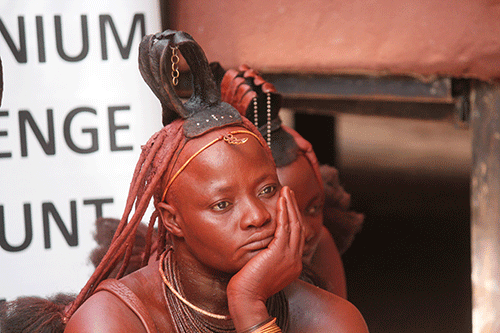The Namibia University of Science and Technology yesterday launched a draft toolkit on reporting on indigenous communities.
At the heart of the toolkit is seeking to equip journalists and journalism students with the necessary skills on how they can accurately report on marginalised communities, whose narrative has been largely misrepresented in the mainstream media.
The toolkit was developed through extensive research by journalism students at Nust, who visited marginalised communities in Kunene and Omaheke regions to gauge their perspectives on how they want their stories told, from their perspective.
Speaking during the launch here on Tuesday, Nust journalism school head of department Hugh Ellis hopes that the toolkit, once completed, would have a lasting impact on development journalism.
“They [students] have developed a draft toolkit for reporters who will be reporting on these marginalised communities with the hope of trying to improve that reporting,” the former journalist said.
Meanwhile, senior journalism lecturer Wanja Njunguna said it is of paramount importance for journalists to avoid misframing the communities through inaccurate or bad reporting, including sensitive topics such as child marriages.
“You [journalists] need to stay there for a week to understand what they [marginalised communities] are doing. When we talk about child marriages, is it really child marriage? Or is it a culture that is being practiced and what is this culture? You need to understand everything very well before you put it in writing, on TV or radio,” she said.
Njunguna’s sentiments were echoed by Chudey Pride, another journalism lecturer at the same institution.
In his submission, Pride said marginalised communities have beautiful stories to tell about their culture, arts, sports and reproductive health amongst others.
“We need to make deliberate efforts to contribute to the development of our people. We don’t have to wait for the BBC before we report on our communities. What is wrong with having a pull-out every month [in our newspapers] on these communities? Advertising [money] will come in a different way,” Pride said.
During the two weeks of their research, the students, accompanied by their lecturers visited San communities in Donkerbos in the Omaheke region and the Ovahimba communities at Orotjitombo and Omungunda in the Kunene region.
At Donkerbos, the communities lamented the lack of a radio station communicating to them in their vernacular.
At present, they are forced to receive information in either Otjiherero, Afrikaans or Khoekhoegowab.
Meanwhile, in Kunene, the communities there complained about the poor road infrastructure; lack of network connectivity, hunger and the impact of climate change, a situation which has forced them to shut both their kraals and gardens.
“Traditionally, their homes were decorated with cow dung, which was a symbol of wealth. Now, it’s just plastic bags,” observed Joseph Haikera, a second-year journalism student.
Toolkit
On the day, several media practitioners and experts, including media ombudsman John Nakuta, Emmilly Brown and Menessia Muinjo converged under one roof to give their input to the draft toolkit.
The toolkit provides a brief background on Namibia’s indigenous communities and their socio-economic, political and cultural lived experiences, San language not used in schools and universities-preservation, limited coverage and access to telecommunications services and the inclusion of indigenous communities in reportage about their lived experiences and mainstreaming of narratives about their self-perceptions, world views and position in broader society.
“There are still not enough and often false stories about indigenous people in popular news. It is very important to take control of media space by telling your own stories about identity, society, and political problems,” Phillipe dos Santos, a journalism lecturer, said.
The toolkit states that news stories must emphasise context from the perspective of indigenous communities.
It also suggests that news stories focus on the treatment of indigenous communities by public authorities and institutions, tourists, the media and other social groups in the country among others.
The news stories must also focus on the indigenous communities’ access to social or public services.
“Stories must include a diversity of voices including those of women, men, young people, the elderly, leaders, ordinary community members, local government authorities and spirit mediums where appropriate. Be proactive about telling the newsroom’s leaders about gaps in source variety so that they can take steps to improve inclusion,” reads another part.
It continues: “Diversify voices for nuanced understanding of issues, events, ceremonies, experiences, rituals, traditions, and cultural practices. Qualify sources. Give background information about sources’ affiliations, qualifications, or real-life experiences that are related to the stories being told. In other words, why is their voice important?”
– emumbuu@nepc.com.na


